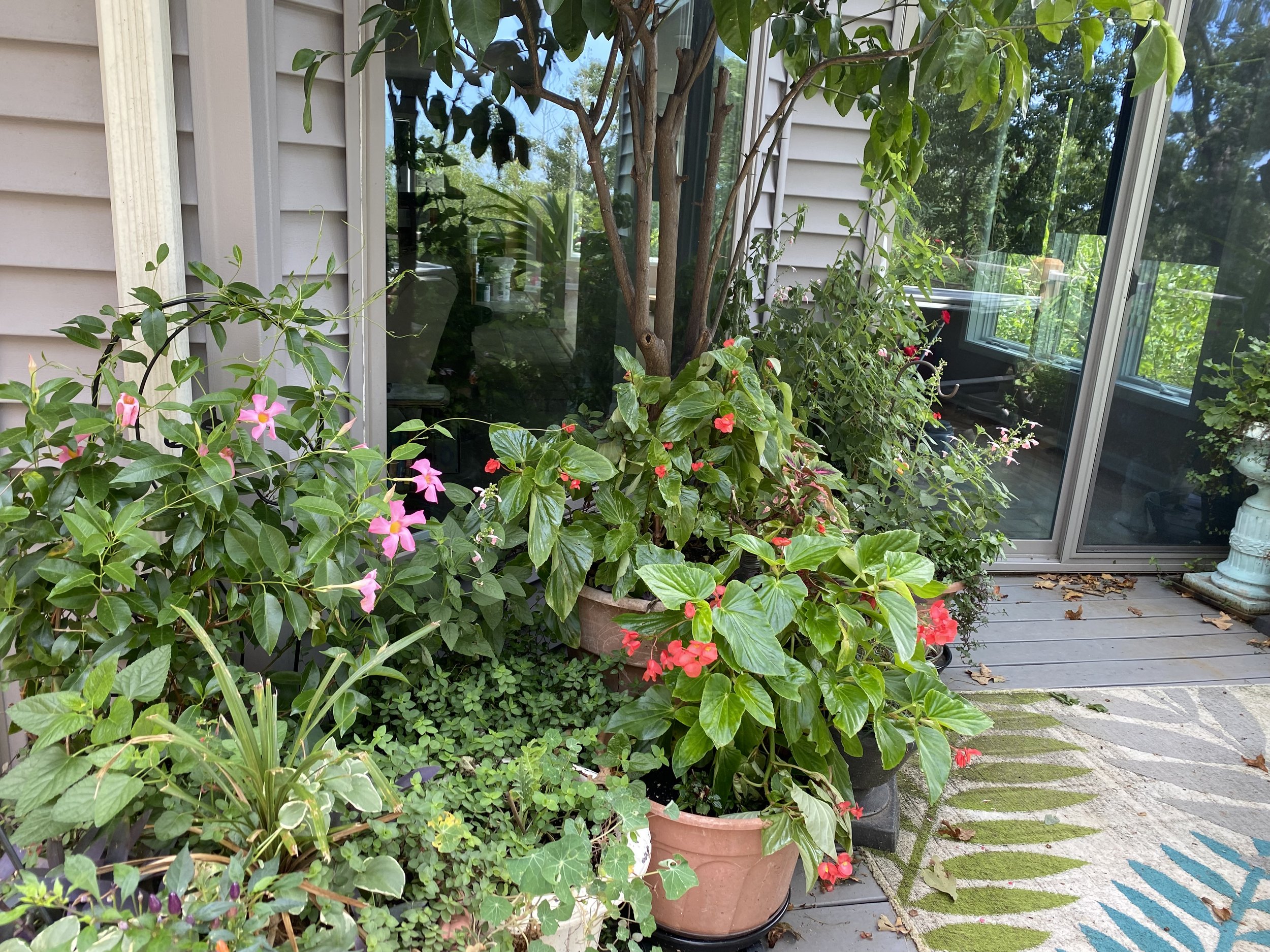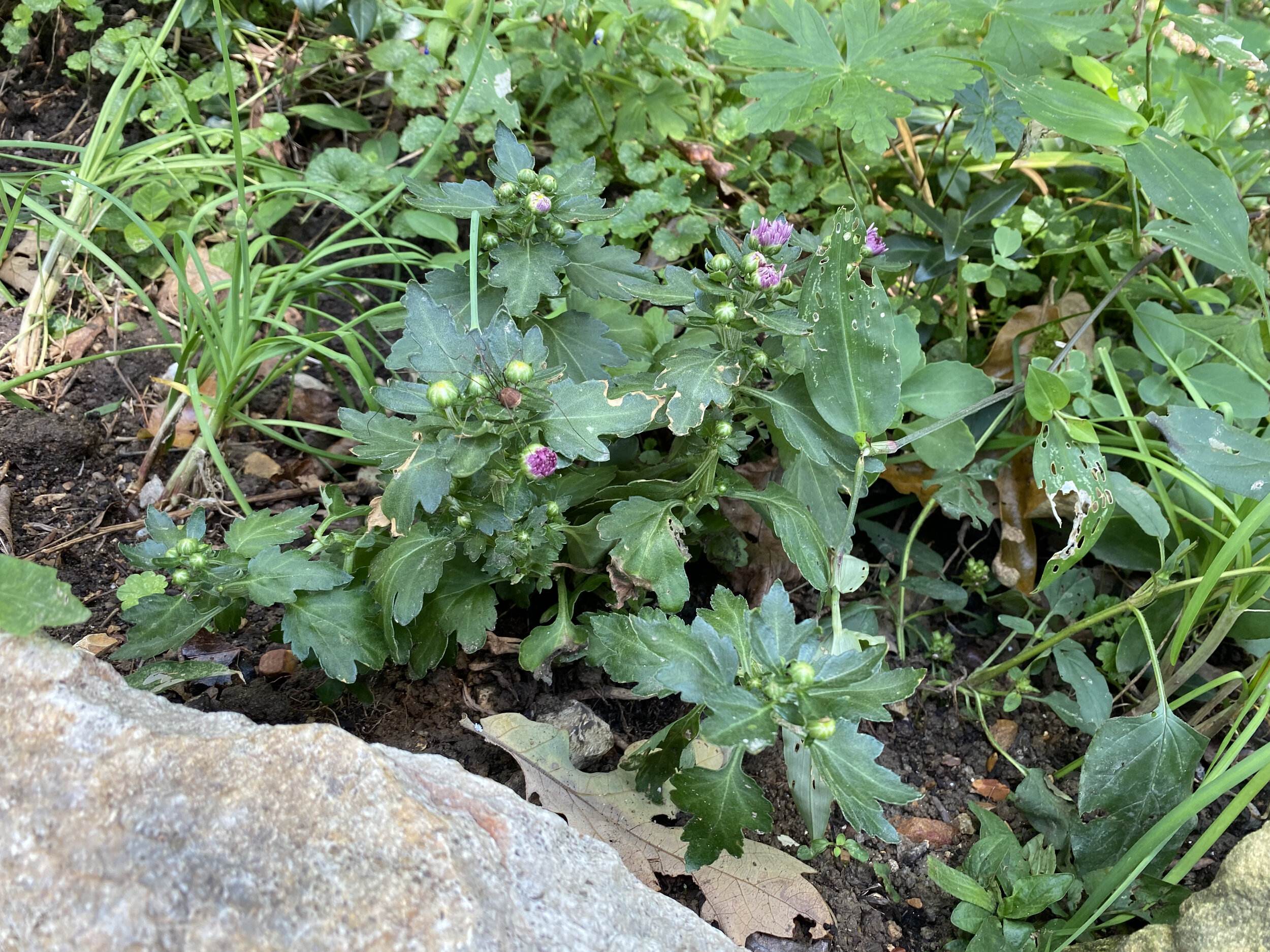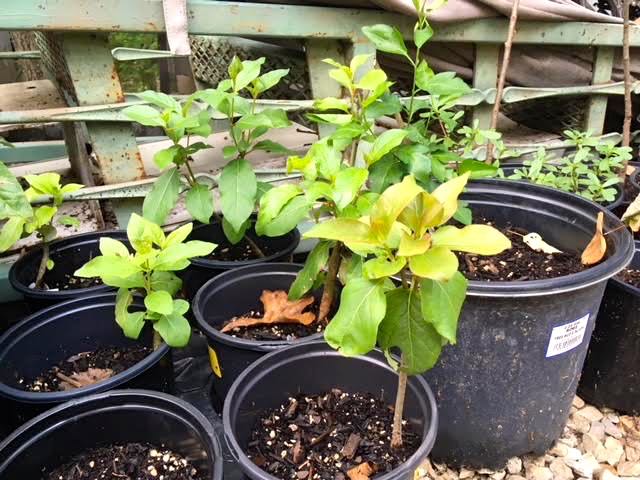September Gardening Chores
/All these plants will winter over behind the sliding glass doors. (Charlotte Ekker Wiggins photo)
September Gardening Chores
It’s almost as if we’re going through a second spring. After record hot summer temperatures in the 100Fs, temperatures are settling in the 80s, prompting plants to focus on reproduction. By that I mean plants are producing nectar to attract pollinators and pollen for them to move from plant to plant. Roses, balloon flowers, Great Blue Lobelia, St. John’s Wort - are all blooming now, a good 2-3 months later than they have bloomed in the past.
I live in USDA Hardiness Zone 6b. To make sure my plants have enough time to settle roots, it’s best to get any new plant additions in the ground by mid-September. Here are some other September gardening chores:
1. It is time to stop fertilizing. Plants need to start slowing down and get out of the growth they usually pursue through spring and summer, even without the boost of fertilizers. Add a last dollop of compost mixed in the soil and that should be it for this season.
2. Keep watering trees and shrubs from now through hard frost. Our first hard frost is usually end of October.
3. If you plan to start a new garden next year, this is the time to cover the area with cardboard to kill off any current growth. Anchor it with rocks or something to keep the cardboard from flying off.
4. Bring some of your herbs inside including parsley, chives, rosemary , catnip and stevia. Basil can also be brought inside; sow seeds now to get new plants started for later use. Dry the herbs and store in airtight container.
5. Move peonies. I have several I buried too deep so when replanting, remember to not bury any more than an inch or two beneath oil surface.
6. If you want a fall garden, this is the time to sow lettuce, radishes and spinach seeds. You may also be able to sneak in some beets.
7. Make notes in your garden diary about jobs for next year. Note what plants worked well this year, what seeds you had meant to plant but didn’t get to – whatever you want to tackle next year.
8. Have favorite annuals? I do, too, and I trim them now before bringing them inside. You can also take root cuttings and start young plants if you have good indoor light. Geraniums, coleus, begonias, impatiens all will winter over inside if you keep them pinched and bushy.
9. Order spring bulbs to plant now. Daffodils are toxic to deer so they won’t get munched on. Tulips are edible so buy a few for color, then plant them in pots behind a solid wall with wire if you don’t want wildlife snacking on them in the meantime.
10. If you have planted Amaryllis bulbs, cut off the greenery and put them in a dry, dark place without water and let them rest for a couple of months. If you want to time when they bloom, pot and water them 6 weeks prior to when you want them in bloom.
11. Don’t bag and rake clippings; leave them on your lawn to return nitrogen to the soil.
12. This is also a good time to stock up on mulch. Buy it in bulk or load up at your local recycling center before they close down for the season.
13. Start trimming plants you plan to bring inside to overwinter. Also repot to combine and take up less space.
For more gardening, beekeeping, cooking and easy home decor tips, subscribe to Garden Notes.
Charlotte



















